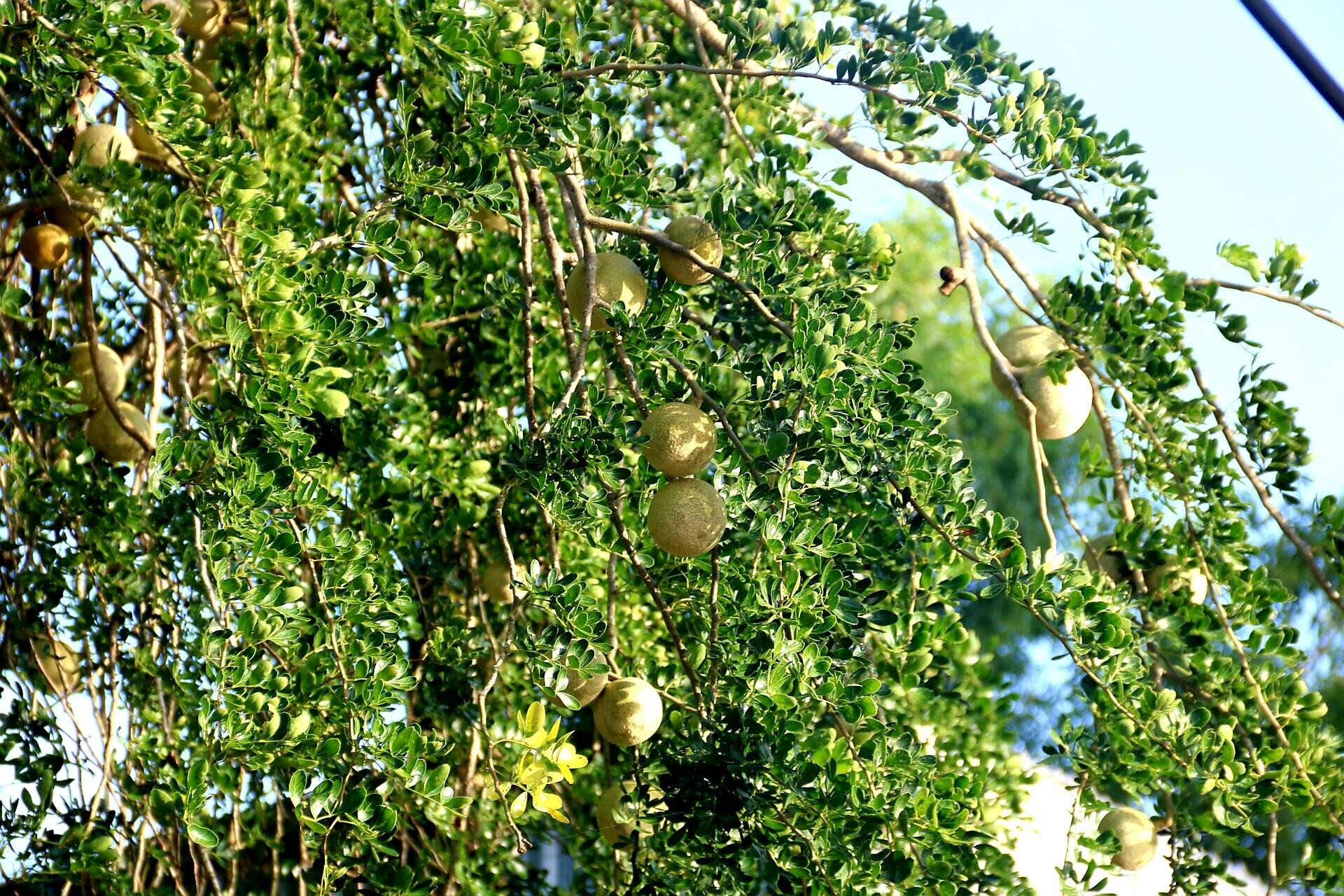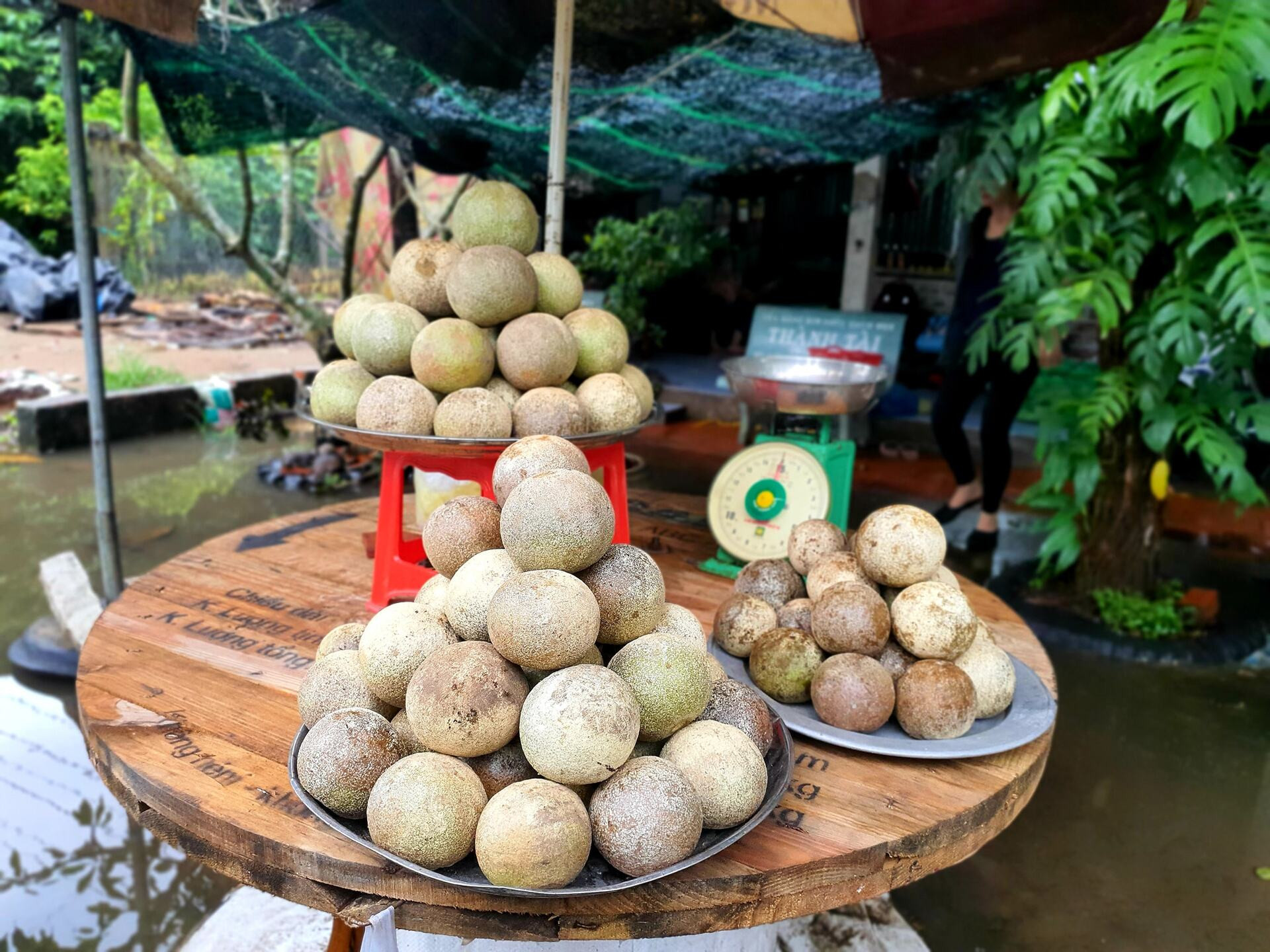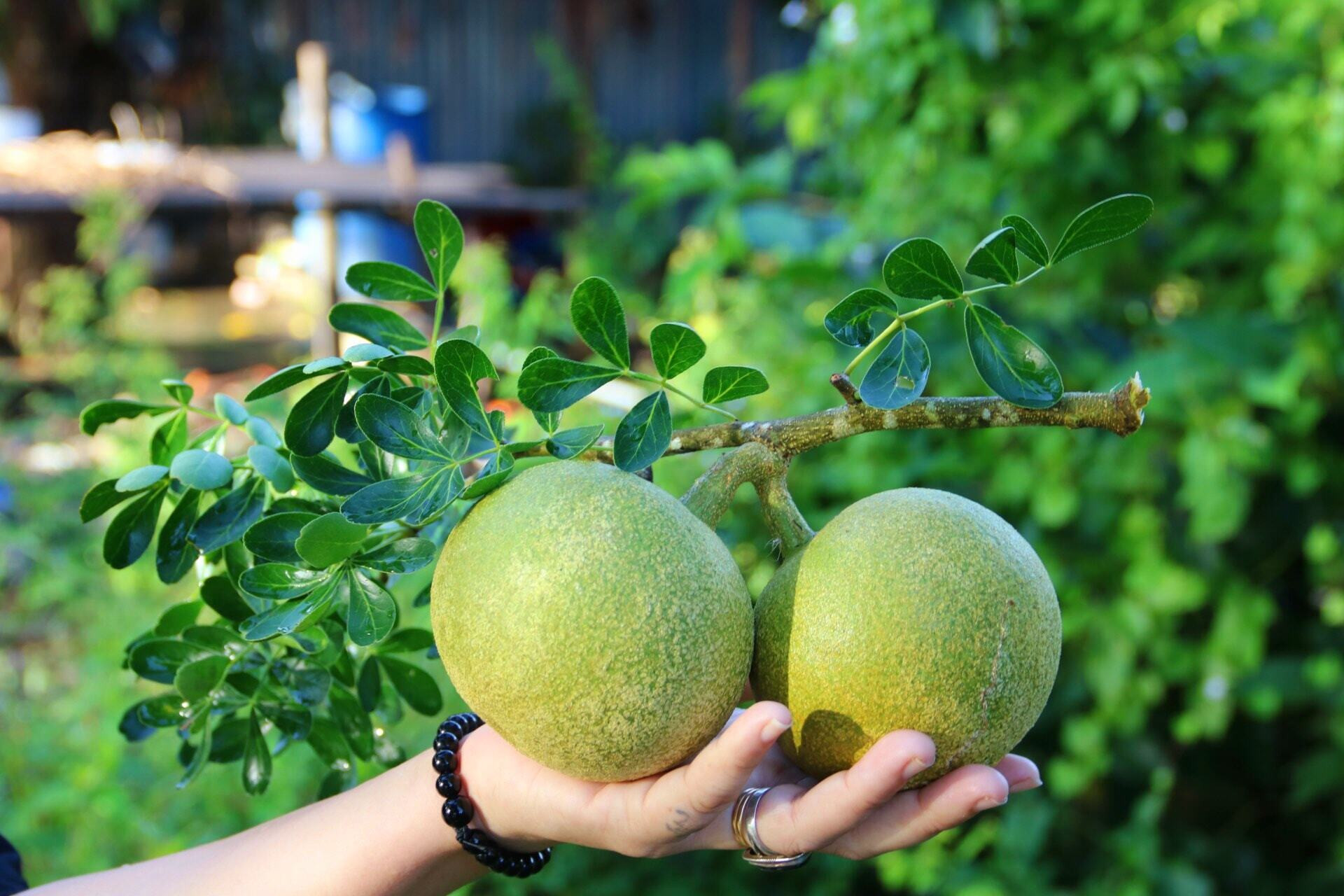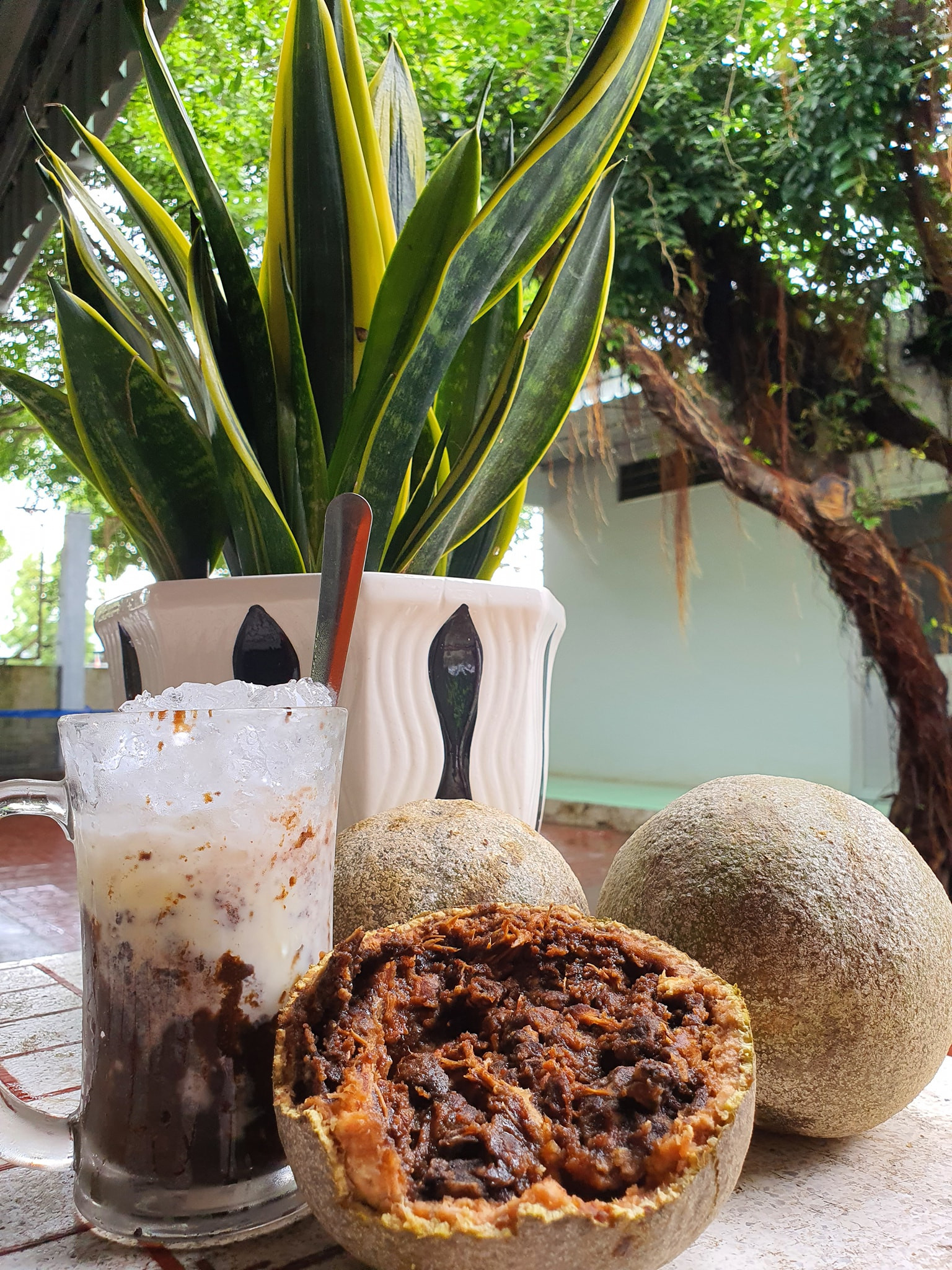
The quách tree bears fruit after 4-7 years of cultivation. Photo by Suốt Anh
The quách fruit is spherical, with a thick, hard shell resembling a dried coconut husk, earning it the nickname “quả gáo”.
The outer shell of the quách is rough, mottled, and grayish-white, resembling mold. When unripe, the flesh is white, turning dark brown when ripe, with a sticky consistency, prominent veins, and tiny seeds.
To determine if a quách is ripe, gently scrape the outer grayish shell; if the underlying flesh is brown, it is fully ripe, and if it is light brown or slightly green, it is partially ripe.

The outer shell of the quách fruit is grayish-white and appears moldy. Photo by Suốt Anh
The quách fruit has a mildly sour taste, but chewing slowly reveals a sweet, buttery, and nutty flavor. Whether to eat the seeds is a matter of personal preference, although excessive consumption is not recommended.
When ripe, the quách fruit drops from the tree, eliminating the need for harvesting by climbing. Due to its thick, sturdy shell, the fruit remains intact even after falling.
Quách picked unripe can be ripened by storing for a few days until the outer shell turns white and emits a strong aroma. Ripe quách plucked directly from the tree is considered the most delicious.

Quách picked unripe can be ripened and then enjoyed. Photo by Suốt Anh
“In the past, many quách trees bore abundant fruit, and homeowners would share or sell them cheaply right at their doorstep. Some sold them for 5,000 or 10,000 VND per fruit, while others charged 30,000 or 50,000 VND per kilogram,” said Đỗ Suốt Anh (born in 1993, from Cà Mau), a young man who often shares images of the Western lifestyle and cuisine.
“The quách fruit holds a special place in the childhood memories of many people from the Western region. The best way to enjoy it is to wait for the fruit to fall, then break it open and savor it on the spot—a delightful combination of tangy, buttery, and crunchy textures, enhanced by its distinctive aroma. When a quách tree is in season, you can smell its unique fragrance from a distance.”
“However, like durian, the scent of quách is loved by some and despised by others. Personally, I enjoy keeping ripe quách in my room for its fragrance,” he added.

The quách fruit holds a nostalgic value for many natives of the Western region. Photo by Suốt Anh
Not only is the quách fruit delicious, but it is also rich in dietary fiber and vitamin C.
To prepare the quách for consumption, the shell is broken, and the flesh is scooped out with a spoon and used in various dishes.
In rural areas, quách is considered an excellent summer cooler, and its price is very affordable. It is often crushed with ice, sugar, and condensed milk to create a refreshing beverage. The distinctive aroma of quách blends beautifully with the tangy and sweet flavors, resulting in a captivating drink.
Today, quách crushed with ice and milk is a specialty that visitors should try when traveling to the Western provinces.


Crushing quách with ice, milk, and sugar creates a delicious summer treat. Photo by Suốt Anh
The people of Trà Vinh also have a unique specialty—quách liquor. This liquor is quite sweet and is often used to treat guests as a sign of hospitality.
In the Western region, the quách fruit is also used as a filling, wrapped with various vegetables and dipped in a sauce made from sặc or clốt fish, mixed with sugar, garlic, and chili. The pungent flavor of the fish sauce blends beautifully with the sweet and sour taste of the quách flesh.
The quách fruit is an excellent ingredient for culinary innovation, providing a refreshing change from everyday meals. Moreover, dried slices of unripe quách are used by locals to treat diarrhea.



































